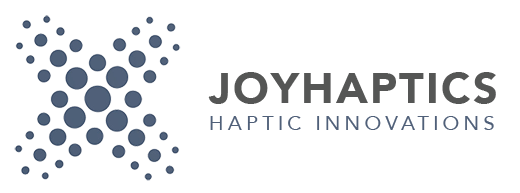SCIENCE BEHIND
Whitepaper for remote solutions
We all need touch – How science and technology are helping long-distance relationships and beyond
Jussi Tuovinen (1, 2)
Kai Martesuo (1)
Minttu Pasola (1, 3)
1. JoyHaptics Ltd, Helsinki, Finland
2. European Academy of Sciences and Arts
3. Helsinki University, Social Psychology
Abstract
A human road map for communication is presented and used as an introduction to the new way of interaction which is based on remote touch. The terminology for remote touch is discussed. Depending on the words used in order to find related documents, different results (research papers, trials, products) are found. The importance of touch in general is outlined and the scientific foundation for remote touch is discussed. Remote touch can potentially be used in various ways, reaching from social interaction to therapeutic use. As an example, JoyHaptics Ltd remote touch solution for social communication is described. Finally, ethics related to remote touch is described. This is mainly bound to those principles also guiding the use of machine learning (Artificial Intelligence, AI) as AI is underlying the enhancement of remote touch experience.
Introduction
We as human beings, have a fundamental need to be connected to others. Also, humans have a fundamental psychological, physical and social need to touch and to be touched by another person (Mäkelä, 2005). Touch is a strong, silent mean of communication. Despite this, it is still missing from our digital communication arsenal as relevant topic. Furthermore, a large fraction of couples or persons close to each other live far apart from each other, lacking closeness. The problem is that touch is missing from our present digital world of communication which is based on audiovisual.
Emerging new social remote touch solutions will enable emotional communication and feeling of presence over distance. Remote touch is sometimes referred to as (computer) mediated social touch (Haas, 2005). The novelty of remote touch can be compared with the first telephones in the end of 19th century which transmitted voice over a wire. This was strange and revolutionary then and in the same way, but much faster, remote touch will become part of our daily life. Application areas of remote touch are spanning across a variety of fields. One of the most prominent areas of application covers long-distance relationships of any form. Some other examples of interesting areas include catalyzing audio-visual communication with Alzheimer’s patients and relieving feeling of loneliness of the elderly.
This paper highlights the future vision of remote touch as a new digital social communication enhancing the wellbeing of human lives.
Human road map for communication
We argue that we are entering a new era of digital communication, i.e., emotional communication, as described in the human roadmap for communication in Figure 1. Remote touch will be an essential part of this new era of communication. This dimension of communication includes many opportunities and positive effects to human health and well-being and is potentially important in future’s daily communication. On the other hand, care has to be taken, e.g., to respect the potential data collected during emotional communication.
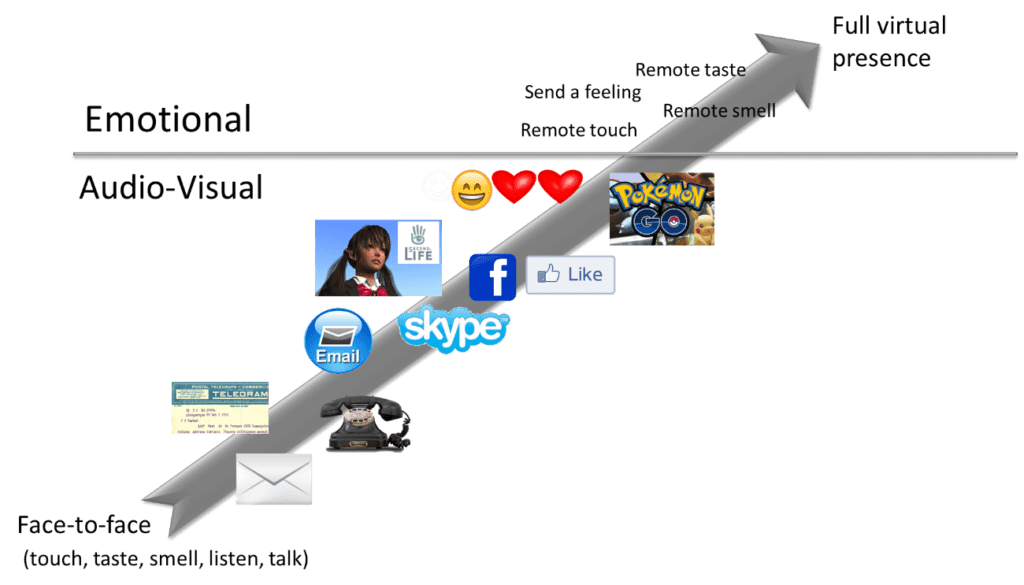
Figure 1. Human road map for communication.
The Internet of Things (IoT) has become a part of our daily lives and continues to change our world. From connecting mere “things”, the natural evolution is that people are connected strongly also on an emotional level. This kind of thinking has led to the use of the term Internet of Emotions (IoE), where feelings and ambience are directly transmitted instead of using audiovisual information. As part of IoE, a social remote touch bridges well-being and the digital world in a new way. Extensive research on the role of touch in communication and wellbeing has been widely carried out both nationally and internationally, and the scientific knowledge is now utilized in bringing remote touch solutions to commercial use.
The role of touch as one of human senses
The importance and the fundamental role of touch-sensation for humans can be easily understood by looking at the development of a fetus. Touch is actually the first sense to develop for a human when the fetus is at three weeks gestation. Other key senses like auditory system, taste, smell, vision, sense of movement and gravity develop much later. Touch sensation is essential for brain development, which is also emphasized in the care process of premature babies, e.g by providing kangaroo care. Therefore, it is not surprising that touch plays a very important role in all stages of human life. For an adult person living an active life, information from sight and hearing senses dominates daily life, which can lead to the impression that touch is only a “secondary” type of sense. In fact, touch is still in many ways essential for our wellbeing, and touch-sensation becomes more important if other senses have not been fully developed or become flawed. This is semantically described in Figure 2.
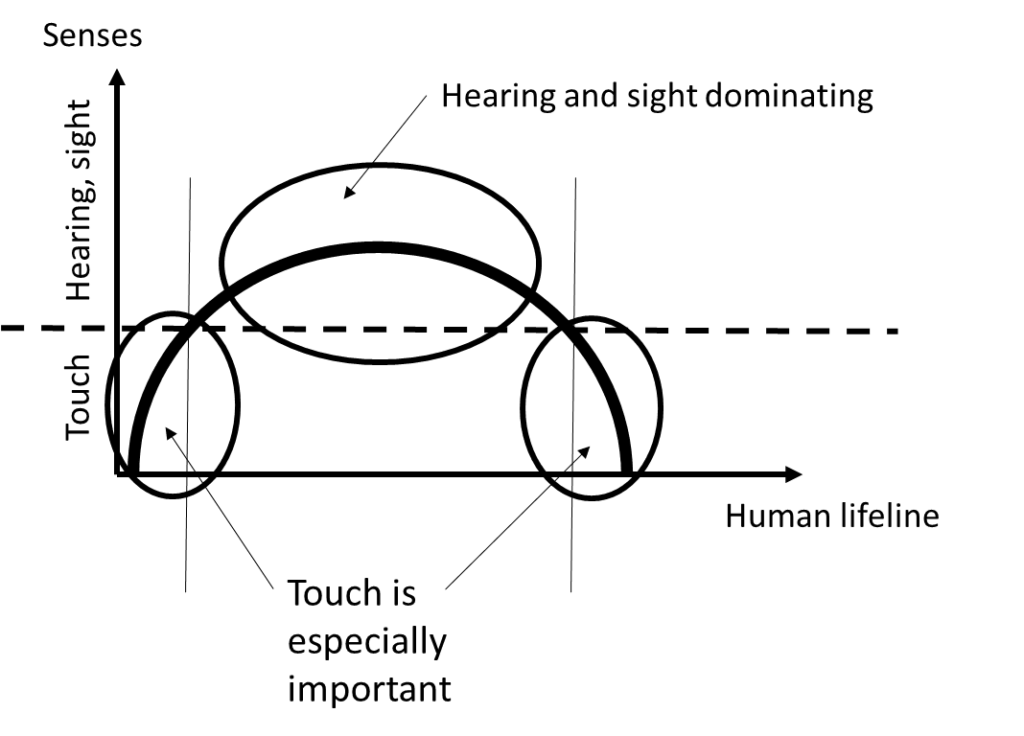
Figure 2. Importance of touch as part of human life line.
Touch is not a uniform sense: there are different nerve-endings on the human skin responding to pain, pressure, itch, vibration, texture – and one specifically to gentle stroking or brushing of the skin. The types that respond to light touch, form a system of slow-conducting unmyelinated (C) afferents, and the activation of the low-threshold receptors (C-tactiles) result in a sensation of a pleasant touch (Löken, Wessberg, Morrison, McGlone, & Olausson, 2009). This kind of interpersonal tactile stimulation is important for our wellbeing (Gallace & Spence, 2010). The list of positive effects of tactile touch is long, here only three key elements are mentioned (see Mäkelä, 2005):
- Inspire positive thinking and expand trust
- Reduce social anxiety and stress
- Boost immune system and lower blood pressure
Foundation of remote touch
Remote touch has been studied extensively during the past decade (see Haans, 2005, James 2008, Merel, 2013, Jakubiak, 2017). Terminology is still forming and different keywords will give different views on the topic. “Remote touch” can be seen as a common name for sending a touch over distance. A more scientific capture is “computer mediated social touch”. Another term often used is “affective haptics” referring to the analysis, design, and evaluation of systems that can capture, process, or display emotions through the sense of touch (Eid & Osman, 2016). Many articles and product trials can also be found by looking for the key word “hug” or “remote hug”. The word hug, in general, seems to have the meaning of a nice positive touch when we want to feel warmth and experience the closeness of another person. One way of understanding touch and remote touch from the perspective of social and human need is described by Maslow’s (1943) hierarchy of needs, as depicted in Figure 3. Touch is an essential part of love and belonging needs of a human and remote touch is a tool to help enable this when a physical distance is between people.
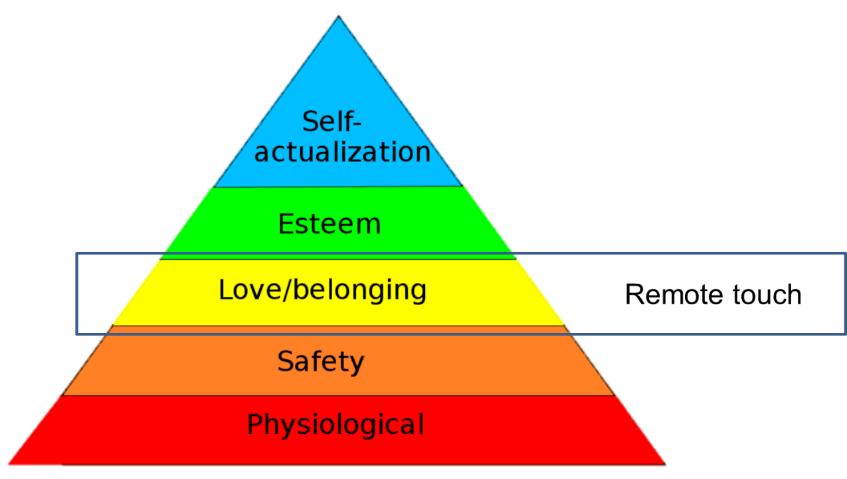
Figure 3. Role of remote touch with respect to Maslow’s (1943) hierarchy of needs.
From the point of practical use and also from scientific understandings, it needs to be asked how well remote touch can create a feeling similar to the one caused by a real human touch. Answers to this question have been searched for in many research projects. Our own current observations as well as previous research has shown that remote touch does create the same feeling as a real touch (Haans, 2007). There is a simple way to conduct a mock test on this: First swipe another person softly and slowly with your hand through their clothes. Then do the same thing with a pencil. It feels practically the same for the receiving person. Therefore, what prevents us extending this “close–by” remote touch further? Nothing.
It is important to note the psychological aspect related to remote touch and the experience of touch in general. Such a thing as a “pure touch sensation” does not exist. Rather, the touch sensation is always a combination of several things: who is the one doing the touching, what you hear, what is happening around you etc. Therefore, touch is strongly contextual and the experience of touch is clearly dependent on who you think is touching (Wang, 2010). Also, the connection between touch and hearing has been recently studied (Ro, 2013). These studies show that there is a strong neural connection between areas of brain reacting to touch and to hearing. In everyday life, this is evident when you think moments where we simultaneously hear a voice of a familiar, nice person and perceive being touched at the same time by her/him. In entertainment applications, where touch is complementing sound (and vision), a strong feeling is created. Today, most Virtual Reality (VR) applications lack the sensation of touch. Only when touch is included in VR, the overall experience of reality can be truly immersive.
Remote touch will directly contribute to human well-being as remote touch will enhance the emotion of being connected. This is a significant challenge for couples, relationships between parent-child, grandparent-child, and good friends, who cannot be together as much as they would like to. In addition, loneliness is increasing and has thus become a global mega trend, which causes serious mental and physical problems. By increasing the feeling of connectivity, well-being of people can be increased. A typical case of an LDR is that of young adults or university students whose partners live in another city. They tend to be busy in their active lives and have limited resources to travel to meet each other. In addition, the present audiovisual means of communication might not satisfy the emotional part of the communication leading to the parties to miss each other and feel lonely. In this case, the feeling of touch is an even more essential way of communication and gives the feeling of closer connection.
To summarize, remote touch is an Internet of Emotions product that bridges well-being and the digital world in a new way. Furthermore, remote touch solutions bring the extensive research done on affective haptics and mediated social touch to commercial use.
Areas of application of remote touch
Humans have a fundamental psychological need to touch and to be touched by another person. Touch is a strong silent mean of communication. Meanwhile, a large number of couples or persons in close relationships live far apart and miss closeness. Long-distance relationships (LDRs) are currently a big challenge that needs to be better supported. Being in a LDR often causes stress and fear of breaking up (Dansie, 2012). Long-distance relationships contain two major elements: 1) Emotional – LDRs are not static; misperceptions about the status of your relationship and each other can arise if you don’t communicate regularly. 2) Physical – a solid relationship can break down by a lack of physical dimension. The problem is that the touch is missing from our present means of digital communication based on audio-visual senses.
In the US, there are 14 million people in long–distance relationships. Between 25–40 % of all romantic relationships among students attending colleges across the US are considered long-distance (Maguire, 2010). Furthermore, an estimated 2.9 % (3.75 million) of US marriages were considered long–distance, with 1 in 10 marriages reported to have included a period at long distance within the first 3 years.
An important driver for the use of remote touch is the people not being able to be together as much as they would like, subsequently missing each other. In addition to these social types of applications, we can foresee therapeutic applications. Main categories for applications are:
- Couples in a romantic relationship. We especially targeted this group in our feasibility study.
- Parent-child group. This includes also grandparent-child relationships, and relationships where the offspring are adults e.g. 40–year–olds with 70-year-old parents.
- Good friends. This also covers a wide range of friendships, e.g. a group of 15–year–old girls and boys as well as a dear adult or elderly friends in a hospital.
- Therapeutic applications. This area is potentially of special interest, yet practically non-existing. Examples of some possible areas include elderly care – especially Alzheimer’s patients, mistreated people who are learning to re-like touch in a safe environment, and prematurely born babies whose parents are not able to be in close contact as much as they want. In this case, remote touch is beneficial both for the baby and the parents as also the parents are experiencing great stress due to the separation and hospitalization of their newborn.
Based on our own work, the above mentioned target groups have the following needs:
- Desire of touch as a part of their daily communication because they miss a dear person in a romantic or non-romantic way.
- A relief from feeling disconnected and lonely in their daily lives.
- Feeling the presence of another person. This is often missing in long-distance relationship. Non-verbal communication is important.
- Feeling of closeness and being touched.
Depending on the case, users of remote touch can enjoy following benefits:
- Enhanced well-being
- Increased happiness
- Feeling of being more strongly connected
- Reduces the risk of break-up and stress
- More personalized and versatile communication
Example of a remote touch solution for social communication
As an example, Figure 4 shows a remote touch solution concept by JoyHaptics Ltd. This remote touch solution includes two main parts: an application in a mobile device and a Bluetooth connected special haptic and tactile terminal. These will enable two users to have a real-time and a two-way connection. Touch is sent using a dedicated hardware device. Respectively, touch is received either by using the same device used to send it or a separate hardware dedicated to recreate the sensation for the recipient.
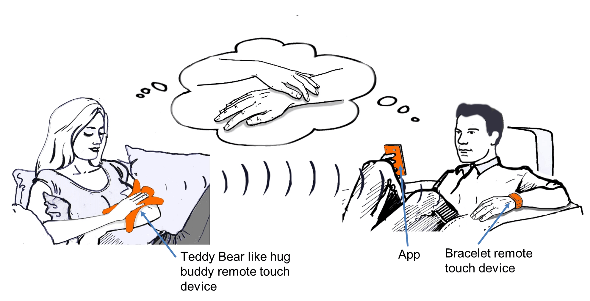
Figure 4. An example of a remote touch solution.
Discussion of ethics of social remote touch
Remote touch is a new way of interaction. It is an emotional and non-verbal way of communication. On the other hand, emotions effect strongly human decisions. Therefore, ethical considerations are an important part of remote touch. Machine learning or more commonly Artificial Intelligence (AI) is practically emerging in all digital systems. Remote touch is not an exception in this respect. Ethical considerations in remote touch are similar as in general related to use of AI. Minna Mustakallio has recently nicely summarized the challenges of the use of AI (Mustakallio, 2018): there is a whole plethora of ethical issues to consider in algorithmic decision making. Intelligent systems:
- have the potential to be used to manipulate us (Cambridge Analytica)
- can be used to impose decisions on individuals based on probabilities instead of their actual behavior
- may be riddled with bias, like infamous COMPAS (Correctional Offender Management Profiling for Alternative Sanctions) in the US
- can be made inscrutable – hiding the why in their black box
- can challenge the autonomy of their users by treading on a fine line between supporting and controlling our decisions.
- They can be used as an ultimate surveillance machine (using the date collected by credit card and mobile payments and online shopping)
We see that the possible use of AI will form the key questions for the ethical considerations. When AI is used responsibly and well, it will enhance the emotional communication experience and can e.g. help couples in long-distance relationship challenges, which are often driven by missing closeness and ways of interaction.
Conclusions
A new way for social interaction was described, namely remote touch. This will bring a new dimension to the audio-visual means of communication available today. Remote touch is a natural continuum for the long development path of different means for communication since telegram was invented. We have already entered an era of communication where we try to express our feelings by digital interaction. Emojis are used widely for this purpose. Remote touch is a much stronger mean of emotional interaction. Our own observations as well as previous research has shown that the feeling of a remote touch is the same as a real touch. List of health and well-being benefits of touch and remote touch is long. We would not exist without a touch. List of potential applications of remote touch is long as well. As an example, a remote touch solution developed by JoyHaptics Ltd was outlined. Also, ethical considerations related to remote touch were depicted. These considerations are mainly driven by a possible use of machine learning (Artificial Intelligence, AI). On the other hand, when AI is used responsibly and well, it will enhance the benefits brought by remote touch.
Acknowledgements
This work has been supported by European Institute of Innovation & Technology (EIT) Digital, Helsinki Node and innovation funding agency Business Finland.
References
Dansie, L., “Long-distance dating relationships among college students: the benefits and drawbacks of using technology”, M.Sc. thesis, University of Missouri-Columbia, 2012
Eid, M. A., & Osman, H. A. “Affective Haptics: Current Research and Future Directions.” IEEE Access, Vol. 4: 26–40, 2016
Gallace, A., & Spence, C., “The science of interpersonal touch: An overview.” Neuroscience & Biobehavioral Reviews, Vol 34, No 2, p. 246–259, 2010
Haans, A./IJsselsteijn, W. A., “The Virtual Midas Touch: Helping Behavior After a Mediated Social Touch; in: IEEE Transactions on Haptics”, vol. 2, no. 3: 136-140, 2009
Haans, A., IJesselstein, W., 2005: Mediated social touch: a review of current research and future directions; in: Virtual Reality No. 9: 149–159
Haans, A., de Nood, C., IJsselsteijn, W.A., “Investigating Response Similarities between Real and Mediated Social Touch: A First Test” CHI 2007, San Jose, CA, p. 2405-2410, 2007
Maguire, K.C., Kinney, T.A., ”When Distance is Problematic: Communication, Coping, and Relational Satisfaction in Female College Students’ Long-Distance Dating Relationships”.
Journal of Applied Communication Research on “Communication and Distance,” Vol 38, No. 1, p. 27-46, 2010
Maslow, A. H., “A theory of human motivation”. Psychological Review, Vol 50 No 4, p. 370–396, 1943
Merel M. Jung, Robert W. M. Boensma, Gijs Huisman & Betsy van Dijk: Touched by the storyteller: the influence of remote touch in the context of storytelling. Humaine Association Conference on Affective Computing and Intelligent Interaction, 2013
Jakubiak, B.K, Feeney, B.C. “Affectionate Touch to Promote Relational, Psychological, and Physical Well-Being in Adulthood: A Theoretical Model and Review of the Research”,
Personality and Social Psychology Review, Vol. 21(3) 228 –252, 2017
Mustakallio M, “AI needs responsible adults”. Futurice blog, 2018
Mäkelä, J., “The importance of touch in the development of children” (in Finnish), Finnish Medical Journal, vol 60, no. 14, p. 1543-1549, 2005
Ro,.T., Ellmore, T.M., Beauchamp, M.S., “A Neural Link Between Feeling and Hearing”
Cereb Cortex. Jul; 23(7): 1724–1730, 2013.
Teh, J.K.S., Cheok, A.D.: Computer Mediated Remote Touch Communication for Humans and Animals. Recent Patents on Computer Science, Vol 1, No 1, p. 26-31, 2008
Wang, R., Quek, F., “Touch & talk: Contextualizing remote touch for affective interaction”
Proceedings of the 4th International Conference on Tangible and Embedded Interaction 2010, Cambridge, MA, p. 13-20, 2010
*** End of Whitepaper ***
